Variety Effects
An adaptation technology that has received much attention for maize is improved varieties that can better tolerate drought and shorter rainy seasons. This section compares simulations of the effectiveness of an older variety, Katumani, with an improved hybrid, H614. Although H614 does not have the drought tolerant characteristics of some of the new varieties, it provides revealing results.
Current
Under current, rainfed climatic conditions and with sufficient nutrients, both Katumani and H614 varieties do best in the cooler areas, especially where rainfall is sufficient in the Highlands. The turquoise color in the difference map reflects that H614 performs better than Katumani by 2,000 to 3,000 kg/ha throughout the Basin. H614 does better particularly in the warm areas, such as east of the Highlands. There is less of a benefit to H614 in the slightly cooler zones.
Future - 2050
In the future, the difference between the two varieties remains important, with H614 yielding higher than Katumani throughout the Basin. Under the warmer conditions, however, there is less of a benefit to H614 in the warmest zones east of the Highlands. Neither variety does well in these very warm conditions.
Change
The change maps reveal the extent of how much climate change would lead to declining maize yield (in brown) across most of the Basin, for both varieties. The warming temperatures and little change in precipitation of the future would cause more water and heat stress. Only in the upper elevations of the Highlands is maize, of both varieties, expected to improve (in cyan) because the cold conditions there will moderate.
The difference map compares the two varieties in how much they would be impacted by climate change. H614 would loose more yield than Katumani in the hot area east of the Highlands, but H614’s yield would still be higher there. It thus appears that even though H614 would loose yield because of the heat, it is more tolerant of heat than Katumani. Katumani’s yield is be more affected west of the Highlands, where H614 does well even under climate change. These results point out the importance of breeding heat-resistant as well as drought-resistant varieties for responding to climate change.
Comparison
The sliders illustrate the distribution of yield under current and then under future climate conditions.
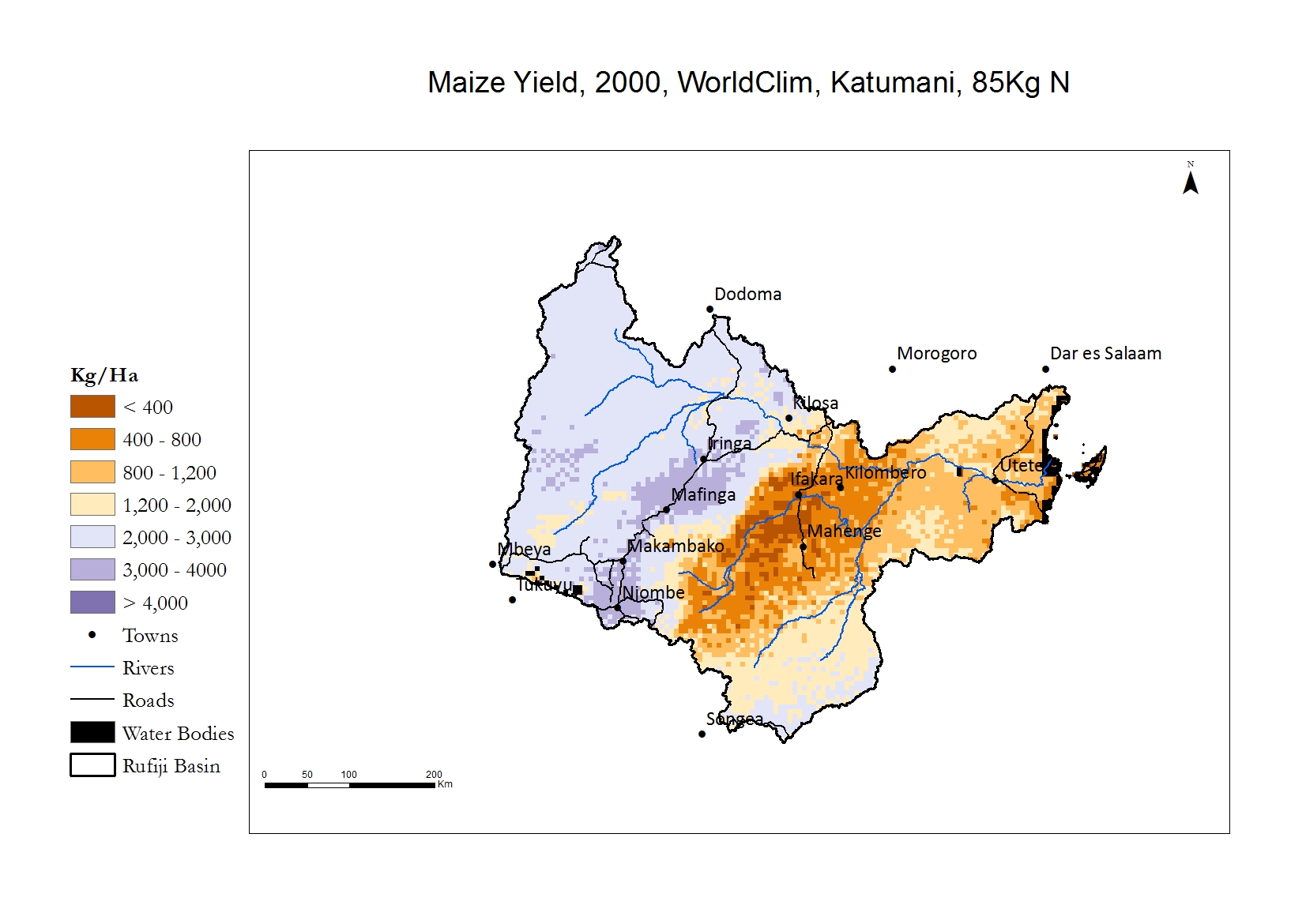 Current
Current
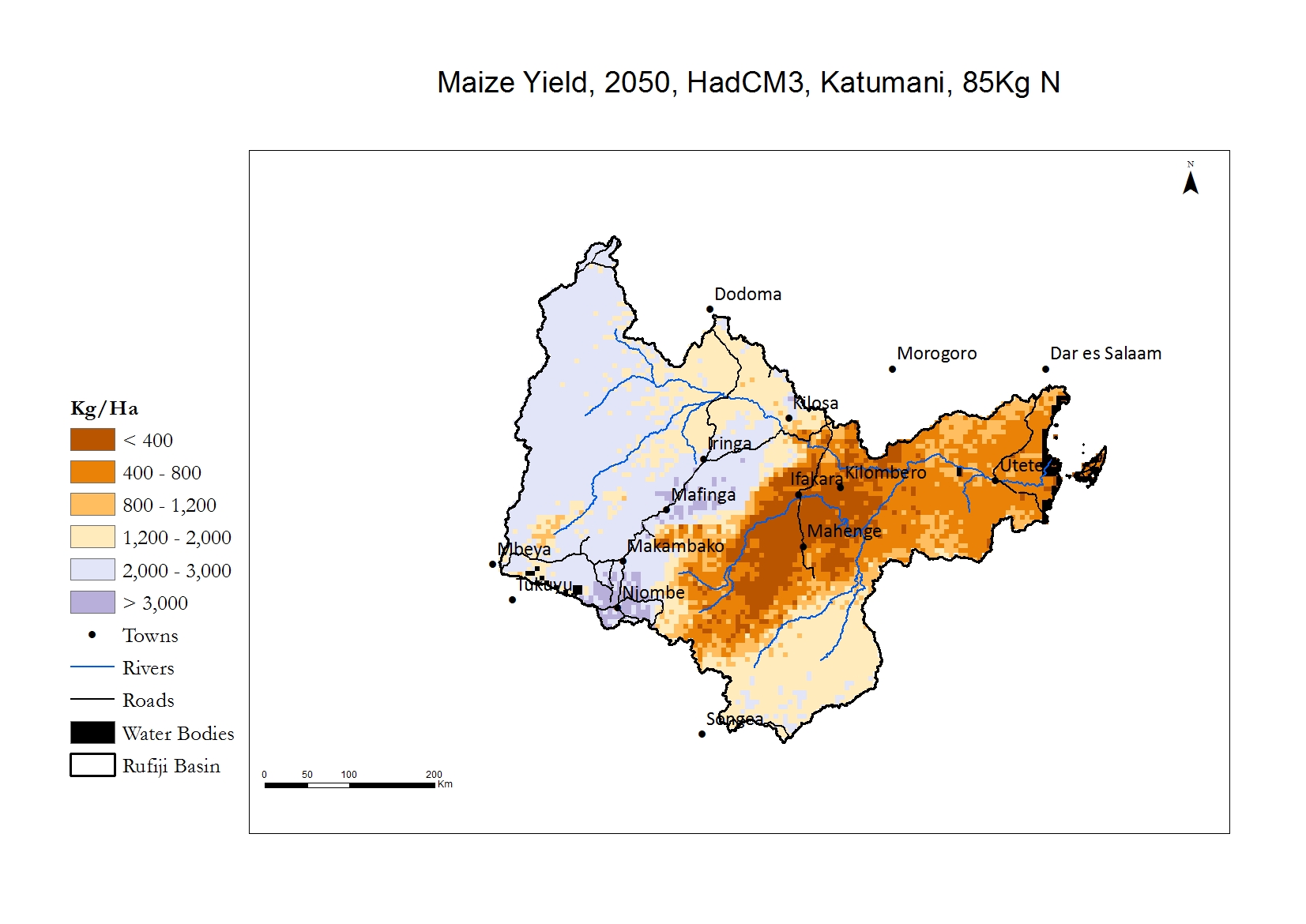
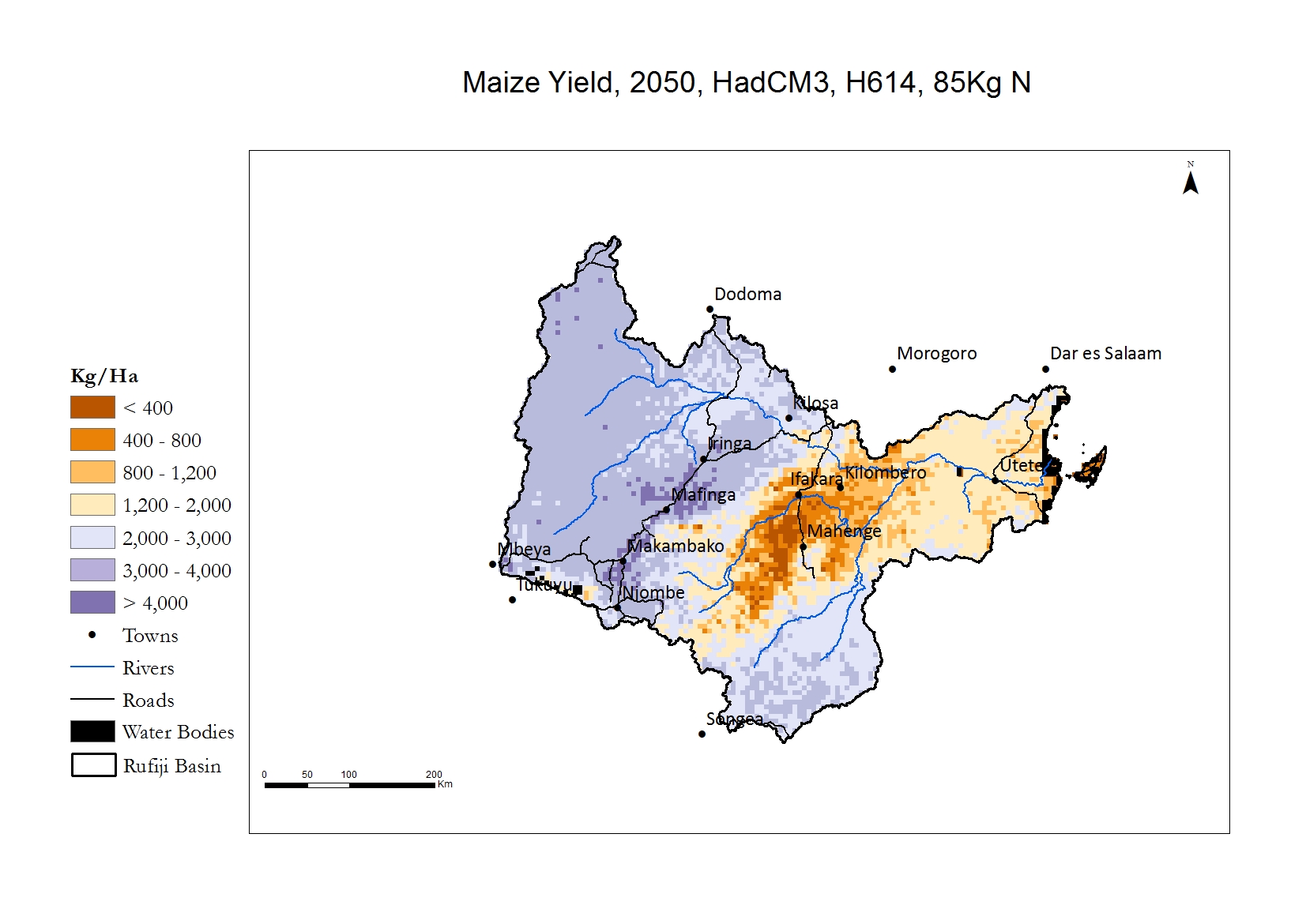
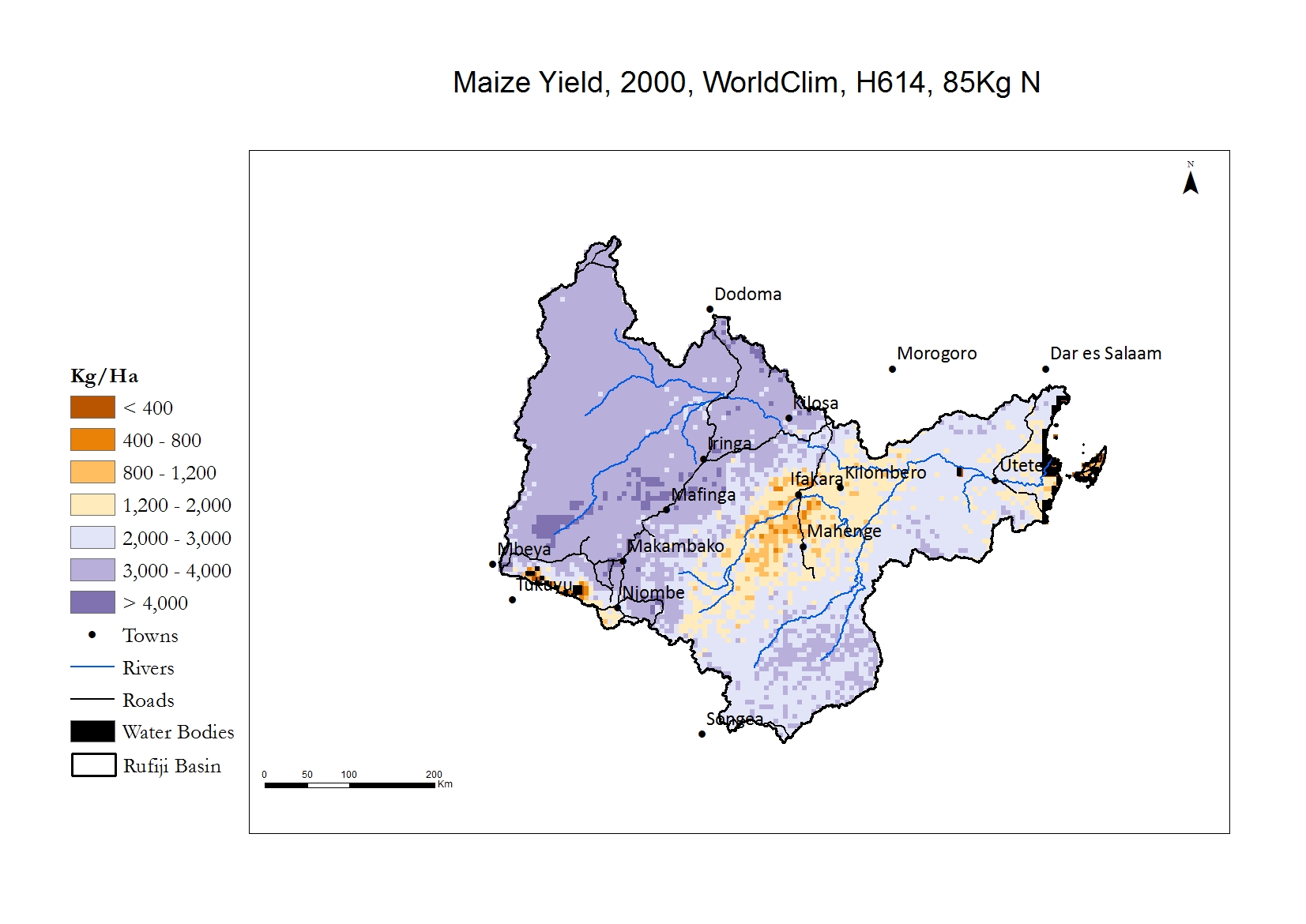 Current
Current
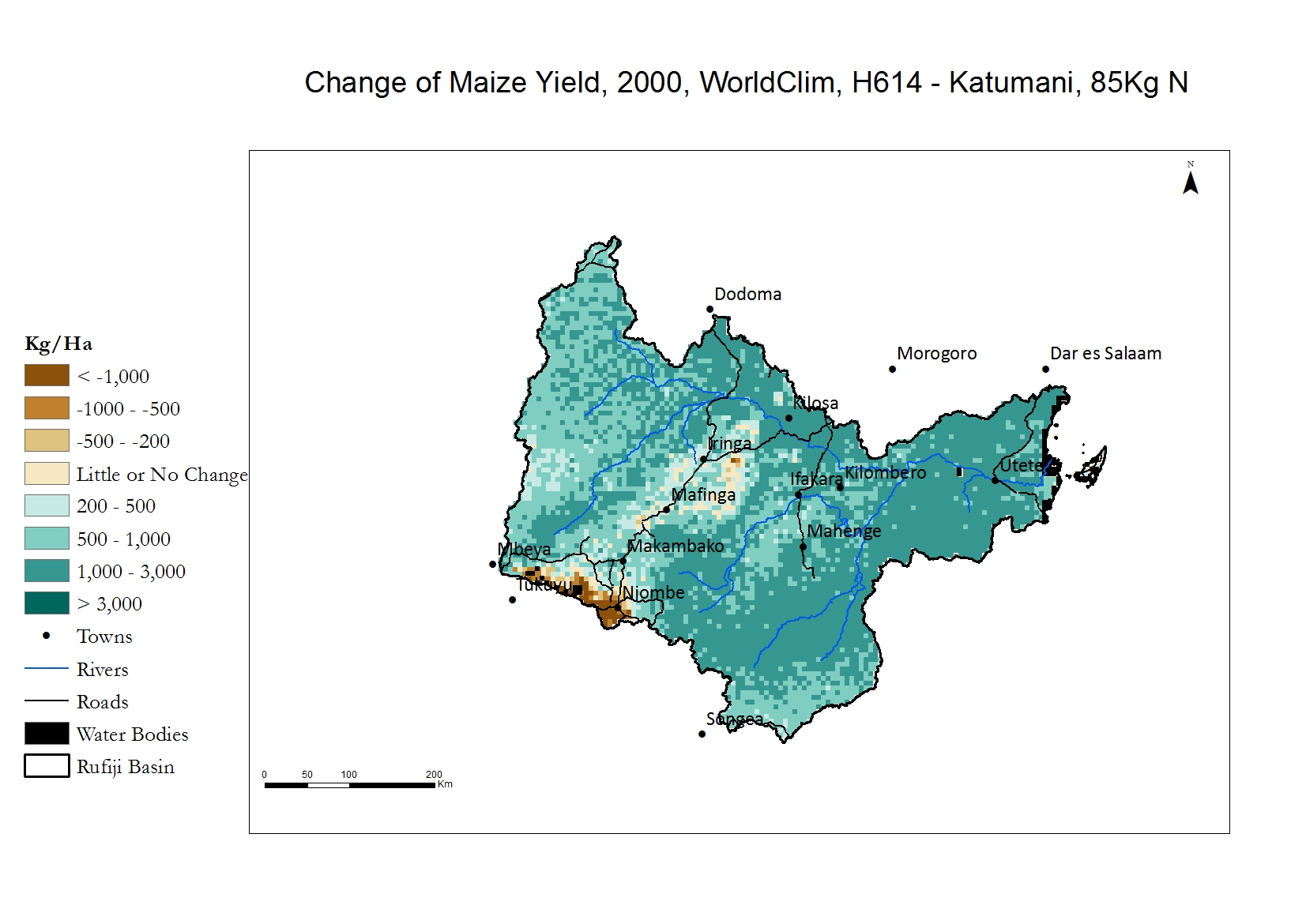
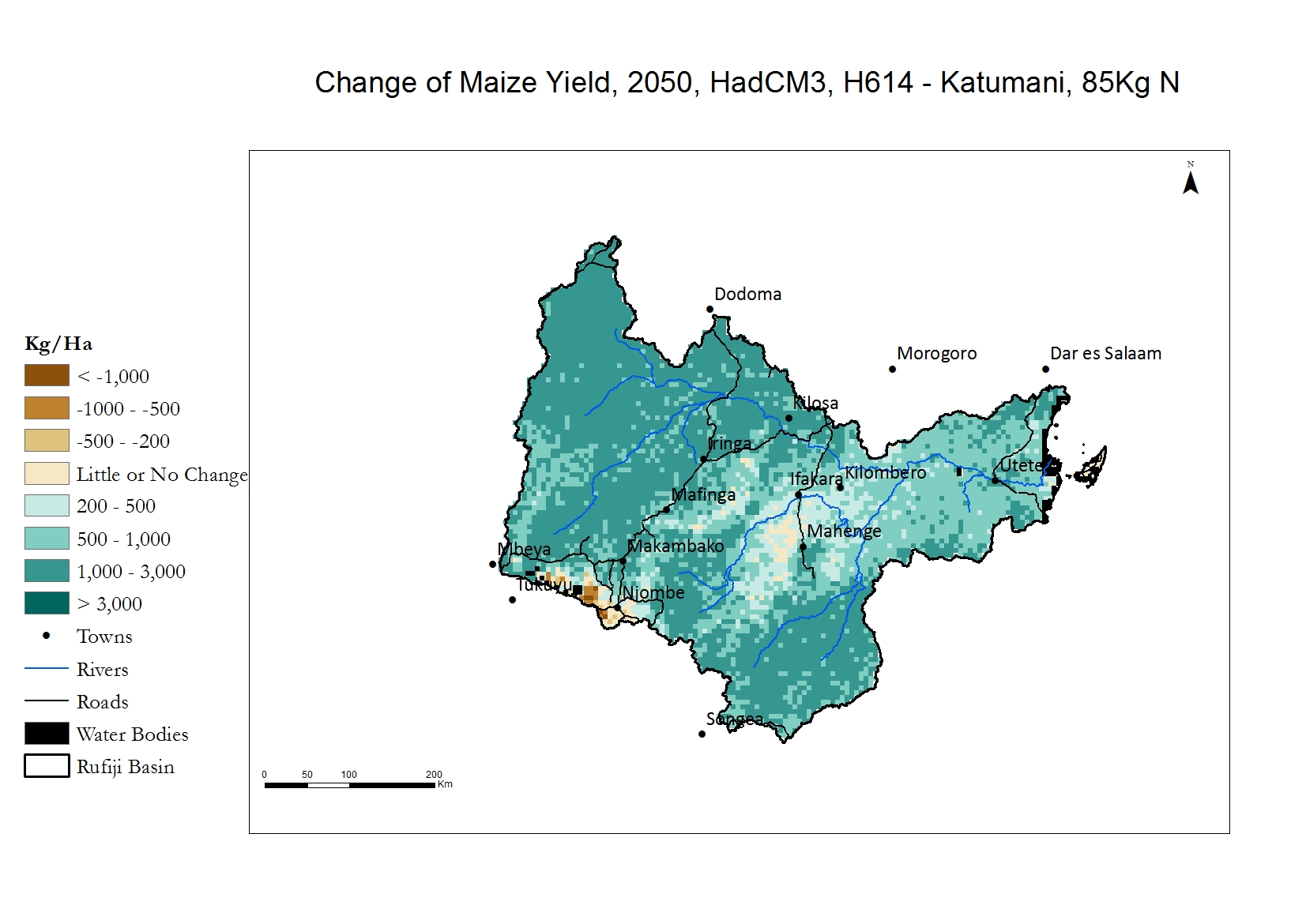
.jpg)
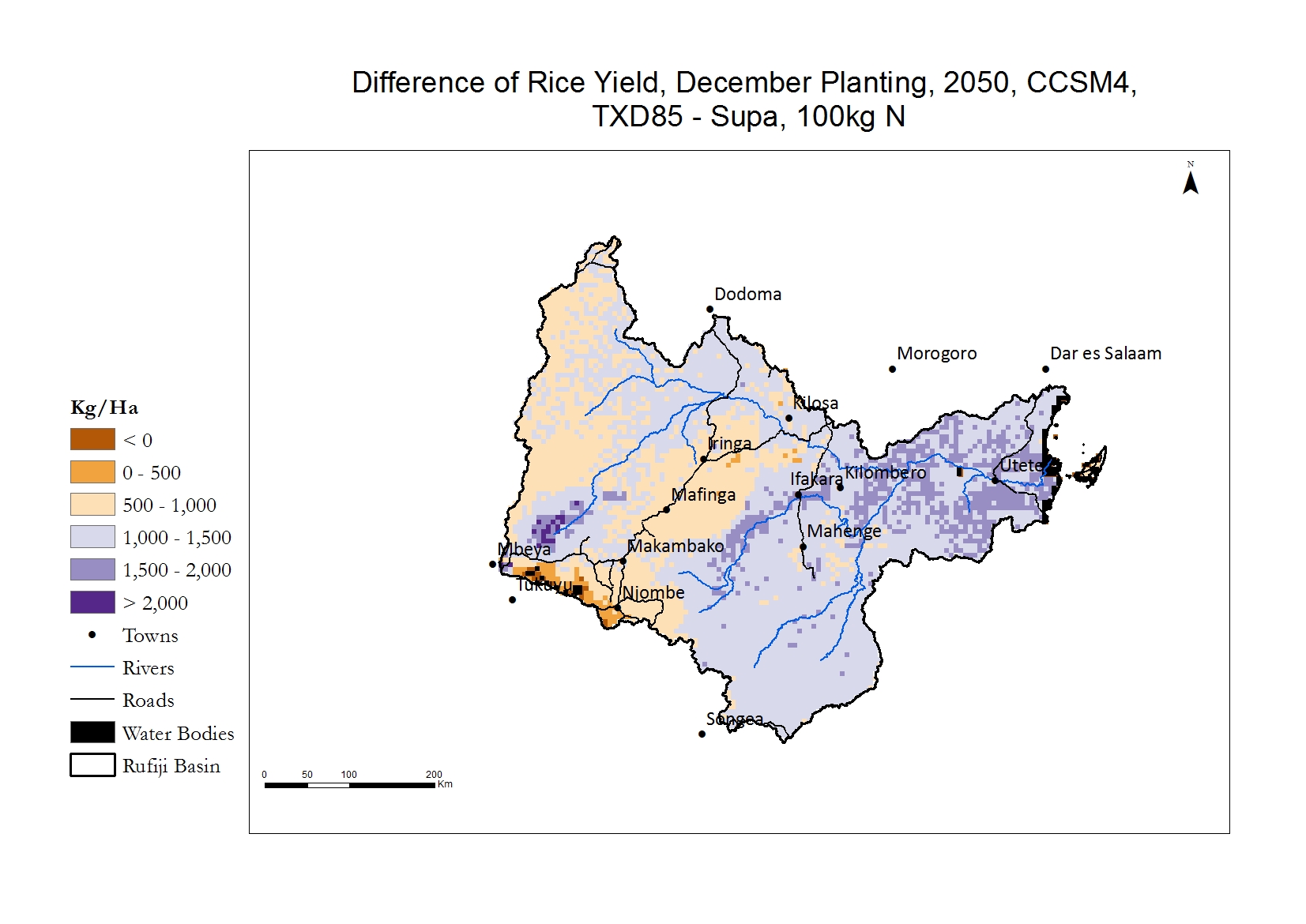
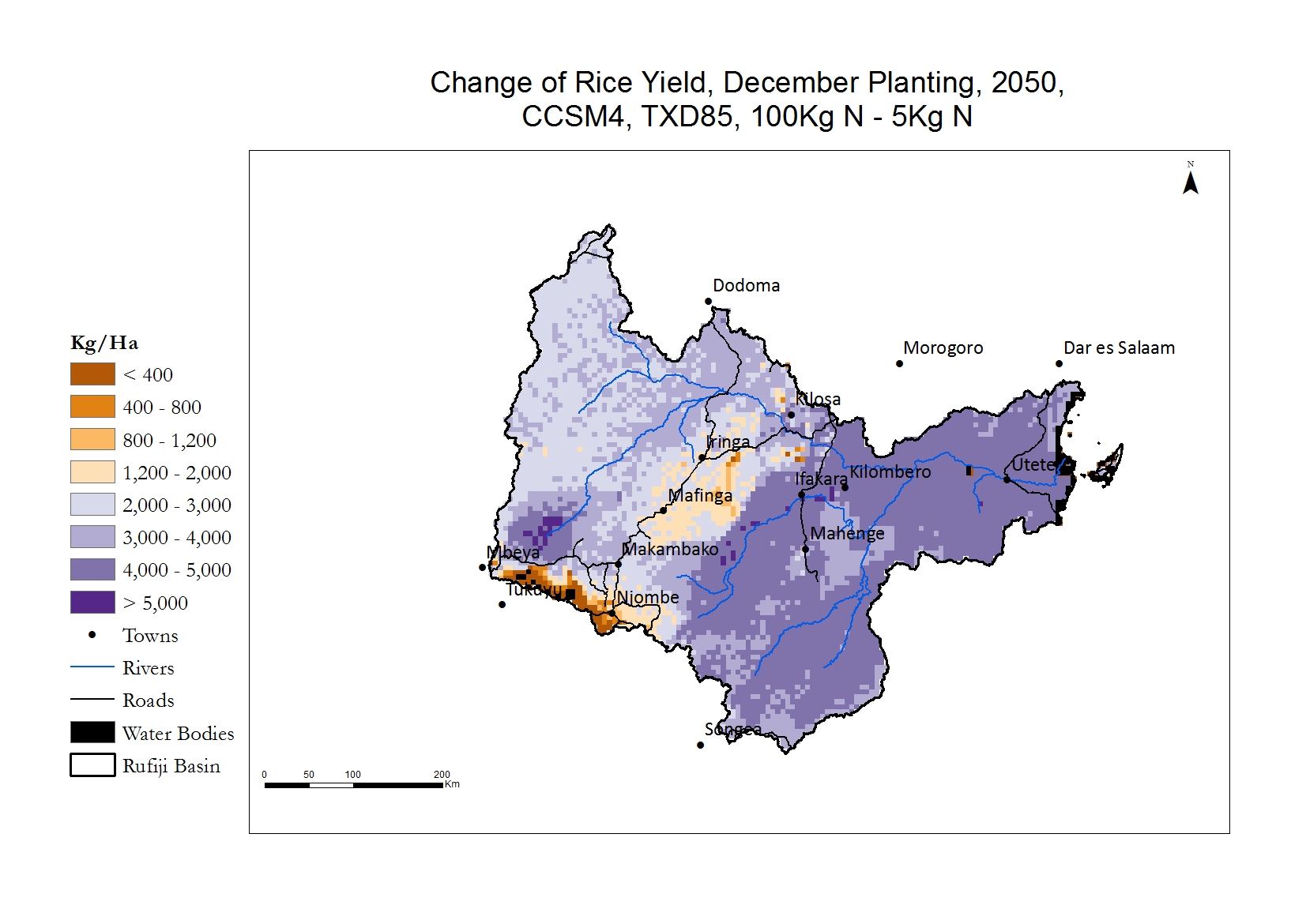

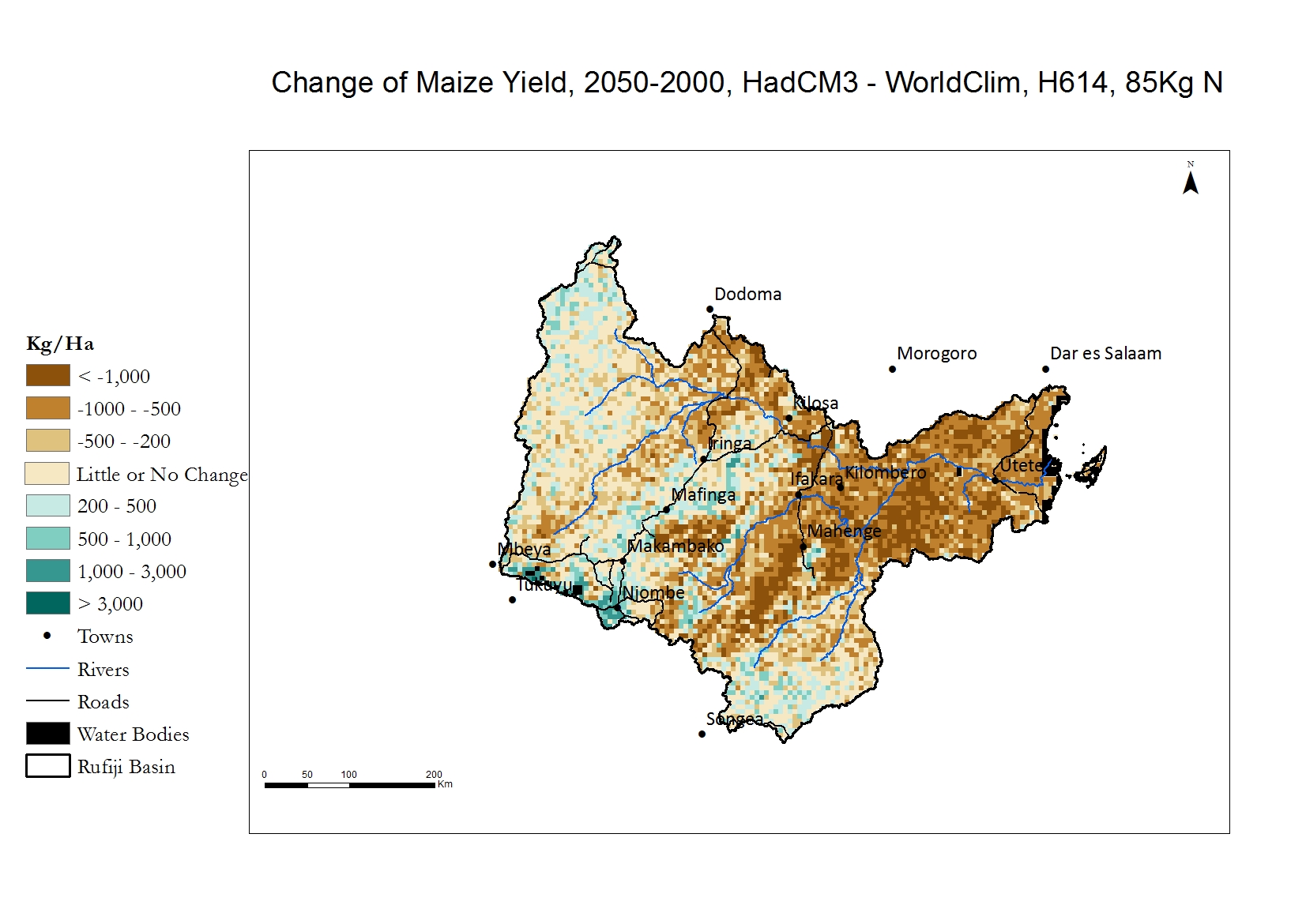
-(H614-Katu_WClim)_Yield-Change.jpg)



